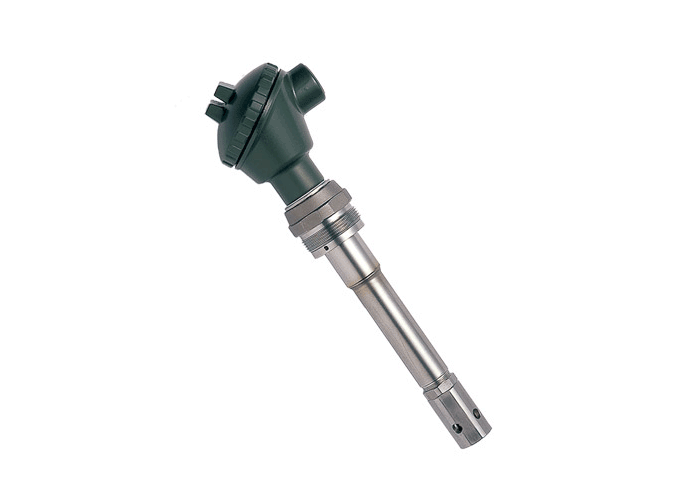Yokogawa has been supplying superior on-line analyzers for monitoring or controlling the conductivity of liquids or solutions.
Now, Yokogawa provides the SC450G four-wire conductivity/resistivity converter, the SC202G and SC202S two-wire conductivity/resistivity transmitters, and the SC100 panel mount conductivity converter. Yokogawa also provides many kinds of sensors for accurately measuring liquid conductivity when using converters/transmitters.
The combination of Yokogawa's converters/transmitters and sensors meets the demanding ultrapurewater requirements of the growing semiconductor and pharmacentical markets in addition to the traditional water quality measurement requirements of standard power plant and chemical applications.
The SC210G conductivity sensor is widely used in various water and manufacturing process applications. A wide variety of mountings are available including screw-in type, flange type, flow-through type, and screw-in type with gate valve.
Details
Specifications
| Object of measurement | Conductivity of liquids or solutions |
| Measuring principle | Two-electrode system |
| Cell constant | 0.05 cm-1, 5 cm-1 |
| Measuring range | 0-0.5 to 0-200 μS/cm (Cell constant: 0.05 cm-1) 0-200 μS/cm to 0-20 mS/cm (Cell constant: 5 cm-1) |
| Temperature Range | 0 to 105 deg C (chamber material: SCS14) 0 to 100 deg C (chamber material: Polypropylene) |
| Pressure range | 0 to 1 MPa (chamber material: SCS14) 0 to 500 kPa(chamber material: Polypropylene) |
| Measuring solution condition | Flow rate: less than 20 l/min is recommended for flow-through type. Air bubbles should not be mixed in the sample solutions to obtain correct measured values. |
| Temperature sensor | PB36 NTC |
| Construction | JIS C0920 watertight (equivalent to NEMA4) |
| Process connection | Screw-in, Flange, Flow-through, with gate valve |
Resources
Brewery is facility to produce beer. Breweries process is the manufacturing process of beer, which is a fermented beverage with low alcohol content made from various types of grain. Wheat, maize and other grains can be used for this. Brewing process starts from malted barley that is to form a mash by milling and mixing with hot water. The malt starches are converted to sugars during this process. This sugar rich water is then strained through the bottom of the mash and will be called as "wort". Then the wort will be brought to boil by bringing to the brew kettle. For bitterness or aroma hops are to be added at different times during the boil. Then the wort is cooled and aerated. And brewers yeast is added for fermentation. From the sweet wort the yeast produces carbon dioxide, alcohol and other byproducts. The GREEN BEER undergoes maturation after fermentation. Filtaration and carbonation are the last steps. Finally the beer will be stay in holding tank until it is bottled or kegged.
Downloads
Instruction Manuals
General Specifications
- Conductivity Detectors/Sensors (2.3 MB)
Drawings
- SC210G-□-302, 303 Flow-through type Conductivity Detector for Low/Medium range (Screw connection, Holder Maerial: SCS14) (229 KB)
- SC210G-□-304, 305, 306 Flow-through type Conductivity Detector for Low/Medium Range (Flange connection, Holder Material: SCS14) (232 KB)
- SC210G-□-312, SC210G-□-313 Flow-through type Conductivity Detector for Low/Medium Range (Screw connection, Holder Material: PP) (180 KB)
- SC210G-□-314, SC210G-□-315 Flow-through type Conductivity Detector for Low/Medium Range (Flange connection, Holder Material: PP) (205 KB)
Looking for more information on our people, technology and solutions?
Contact Us
